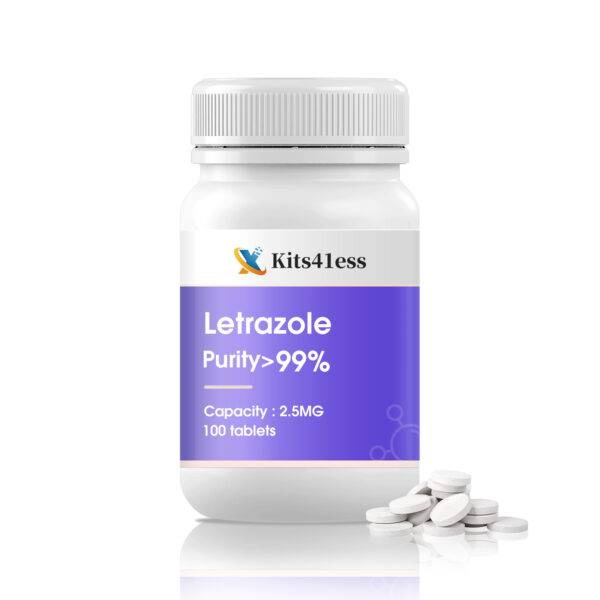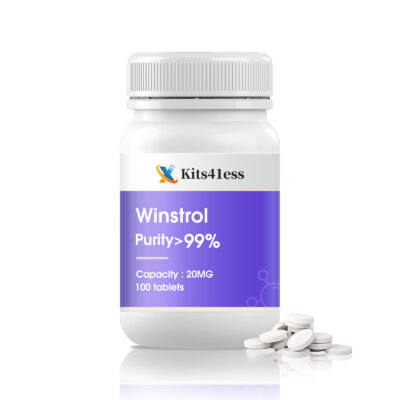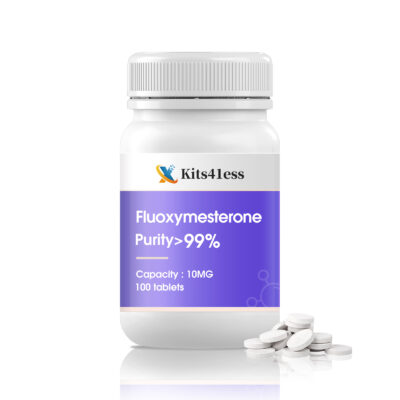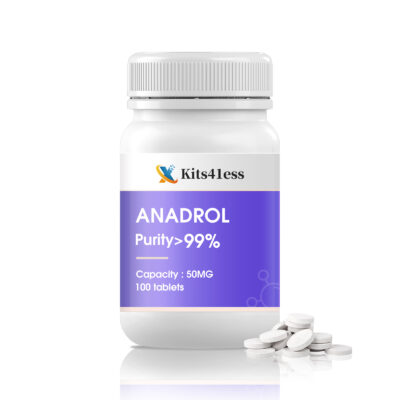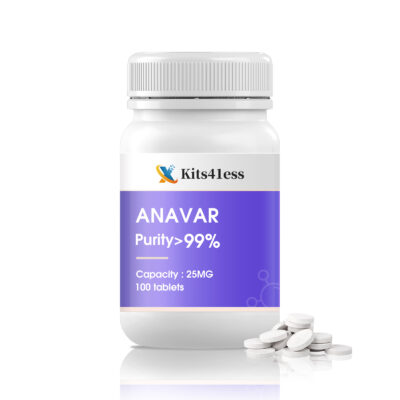Letrazole
$18.00
As a drug that has attracted much attention in the medical field, letrazole has shown important value in tumor treatment and reproductive medicine with its unique mechanism of action, but the risks and regulations in its use should not be ignored.
From the perspective of composition and mechanism of action, in the chemical structure of letrozole, the triazole group can accurately bind to the active center of aromatase, irreversibly inhibiting its process of converting androgens into estrogens, thereby cutting off the “nutritional source” of estrogen receptor-positive tumor cells and curbing tumor growth. In the treatment of breast cancer, it can be called the “main force”: it is the first-line drug for advanced breast cancer after menopause, and can significantly prolong the survival of patients compared with traditional drugs; it is used for postoperative adjuvant treatment of early breast cancer, which can inhibit estrogen for a long time and reduce the risk of recurrence; for locally advanced breast cancer, preoperative use can shrink tumors and create better conditions for surgery. In addition, in reproductive medicine, although it is used beyond the instructions, it can stimulate follicle development by regulating hormone secretion for patients with ovulation disorders, bringing hope to many women who have difficulty in preparing for pregnancy.
Description
Letrazole Product Introduction
Letrazole, chemically named 1-[[bis(4-cyanophenyl)methyl]-1,2,4-triazole, is an aromatase inhibitor that plays an important role in tumor treatment. It inhibits the synthesis of estrogen in the body and breaks the hormone balance, thereby playing a therapeutic and preventive role in certain types of cancer. However, its use must strictly follow medical regulations, and attention should be paid to potential side effects and contraindications.
I. Basic properties
(I) Composition and structure
The unique chemical structure of letrozole determines its pharmacological properties. Its chemical formula is C₁₉H₁₄N₄, and the triazole group in the molecule can tightly bind to the active center of aromatase. Aromatase is the key enzyme that converts androgens into estrogens. Letrozole binds to the enzyme and irreversibly inhibits its activity, reducing the production of estrogen from the source, thereby affecting the proliferation of tumor cells that rely on estrogen for growth.
(II) Dosage form and specifications
The common dosage form is white tablets, and the main specification on the market is 2.5mg/tablet. This dosage form is convenient for patients to take orally, and the single tablet dose is fixed, which is convenient for doctors to formulate medication plans according to the patient’s condition. The packaging specifications are mostly 10 tablets/box or 30 tablets/box, which is convenient for patients to purchase and store according to the course of treatment. When storing, it is necessary to avoid light, seal, and place in a dry place.
(III) Mechanism of action
After entering the human body, letrozole is rapidly distributed throughout the body, specifically binds to aromatase, and inhibits its catalytic conversion of androgens (such as androstenedione and testosterone) into estrogens (such as estrone and estradiol). For estrogen receptor-positive breast cancer cells, estrogen is an important stimulating factor for their growth and proliferation. By reducing the level of estrogen in the body, letrozole can block the growth-promoting effect of estrogen on tumor cells, induce tumor cell apoptosis, and inhibit tumor growth and metastasis. In addition, it can regulate the hypothalamus-pituitary-gonadal axis and feedback-promote the increase of gonadotropin secretion, but this effect is not the main focus in tumor treatment.
II. Clinical application
(I) Breast cancer treatment
Postmenopausal advanced breast cancer: Letrozole is the first-line drug for the treatment of postmenopausal advanced breast cancer with estrogen receptor-positive, progesterone receptor-positive or unknown receptor status. A large number of clinical studies have shown that compared with traditional drugs such as tamoxifen, letrozole can significantly prolong the patient’s progression-free survival and overall survival, effectively control tumor progression, relieve patient symptoms, and improve the quality of life. In a large clinical trial, the median progression-free survival of patients using letrozole was extended by several months compared with that of patients using tamoxifen.
Adjuvant therapy for early breast cancer: For postmenopausal patients with early breast cancer, adjuvant therapy with letrozole after surgery can reduce the risk of tumor recurrence. It can continuously suppress estrogen levels in the body and reduce the possibility of recurrence of residual cancer cells due to estrogen stimulation. Patients are usually advised to take it continuously for 5-10 years. The specific course of treatment should be determined by the doctor according to the individual conditions of the patient, such as age, tumor stage, hormone receptor status, etc.
Preoperative neoadjuvant therapy for breast cancer: In some patients with locally advanced breast cancer, the use of letrozole for neoadjuvant therapy before surgery can shrink the tumor, reduce the difficulty of surgery, and increase the surgical resection rate. At the same time, it can also provide a reference for the formulation of subsequent treatment plans by observing the tumor’s response to the drug.
(II) Ovulation induction therapy (off-label use)
In the field of reproductive medicine, some doctors use letrozole off-label for ovulation induction therapy. For patients with ovulation disorders such as polycystic ovary syndrome, letrozole inhibits estrogen synthesis, relieves the negative feedback inhibition of estrogen on the hypothalamus-pituitary gland, promotes the increase of gonadotropin secretion, and thus stimulates follicle development and ovulation. However, this off-label use needs to be carried out under strict medical supervision, weighing the pros and cons, and fully informing patients of the potential risks.
III. Dosage and Administration
(I) Dosage for breast cancer treatment
For the treatment of breast cancer, the recommended dose is 2.5 mg once a day, orally, regardless of meal time. For elderly patients, patients with mild to moderate liver or kidney damage, no dose adjustment is required; however, patients with severe liver damage should be used with caution and should closely monitor adverse drug reactions. During treatment, the doctor will evaluate the treatment effect based on the patient’s condition changes, tolerance, tumor markers, imaging test results, etc., and decide whether to continue medication or adjust the treatment plan.
(II) Dosage for ovulation induction
When used off-label for ovulation induction, the drug is usually started on the 3rd to 5th day of the menstrual cycle, and the dose is generally 2.5 to 5 mg per day, taken for 5 consecutive days. The specific dose needs to be adjusted according to the patient’s individual conditions such as hormone levels and ovarian function, and ultrasound monitoring of follicle development and detection of hormone levels are required during treatment to ensure normal ovulation and avoid overstimulation of the ovaries.

